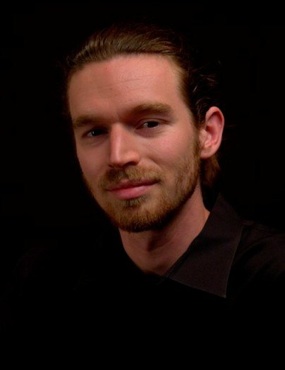Review of 10-19-2014 Concert
By Roger Emanuels, Performing Arts Monterey Bay
10/21/14
A Sunday afternoon of chamber music has rarely been so rewarding to hear. Violinist Roy Malan and colleagues Susan Freier, Polly Malan, Stephen Harrison and Ian Scarfe presented a program for the Santa Cruz Chamber Players at Christ Lutheran Church in Aptos. With the title “Too Intimate to be Expressed in Public,” the program was dedicated to the “No-hold barred emotions of Dvořák, Shostakovich, and César Franck.” Malan suggested that audiences often respond to the fast movements of a work, whereas it is in the slow movements where composers pour their deepest sentiments.
Those sentiments were clearly present in Malan’s reading of Four Romantic Pieces by ian-scarfe-HEADSHOTCzech composer Antonin Dvořák. From the outset listeners were charmed by the serene and gentle sound of the violin with the exquisite and sensitive piano accompaniment by Ian Scarfe (pictured). These small pieces gave the duo ample opportunities to express a wide range of emotions, always stated with subtlety. The folk-like second piece is reminiscent of similarly inflected moments in the composer’s symphonies and piano works. The last piece in the group echoes Schumann’s character pieces. It was a dramatic narrative ending with a tragic descent into the minor key.

Cellist Stephen Harrison joined Malan and Scarfe for the Trio No. 2 by Dmitri Shostakovich, composed in 1944 and dedicated to the composer’s late friend Ivan Sollertinsky, who, as a Jew in Soviet Russia, possibly died at the hands of the secret police. That would explain the abundance of drama and otherworldly sounds in much of the work. The cello opens the first movement with a treacherous passage of harmonics, in the highest range possible. The violin enters in a low register, just the reverse of the expected relationship in what turns out to be a fugue. This juxtaposition of range, often by a distance of two octaves or more, is a characteristic in many moments of the work.
This performance emphasized the dramatic elements in the writing, at times allowing rough edges in the phrasing. The work can be performed in more elegant style, but this group danced with the peasants, especially in the earthy second movement, played with the schizophrenic klezmer character it deserves. The third movement Largo is a simple but colorful repeated chord progression, creating a chaconne base for the deeply felt lament in the strings. The quiet calm created by the ensemble was interrupted by the final movement that erupts in a “death dance” Jewish melody, interpreted here in a hesitant fashion rather than the usual frenzy. The work finishes as melodies from earlier movements are recalled.
The full ensemble assembled for the final work, Quintet for Piano and Strings by the French composer César Franck. The work is a passionate statement, almost orchestral in scope. Such a large sound in the small performing space can be a challenge, and the group met it well, creating a fullness of sound that was warm and expressive. There was a broad sweep to the long phrases. Colorful harmonic shifts in the slow middle movement were made to sound like big chords on a pipe organ. In spite of the grandeur of the last movement, the performance brought out the subtleties in the rhythmic flow. The hero of the concert was pianist Scarfe, always a solid and delicate presence. He seemed perfectly content turning his own pages, not an easy chore considering the fistfuls of notes he played with ease.
